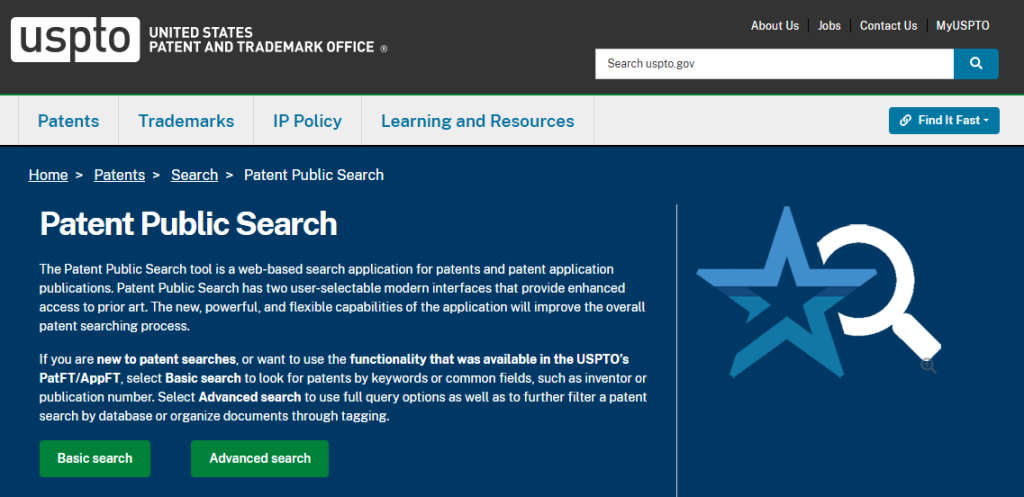Most inventors make the same costly mistake when they discover an existing product they want to improve: they assume it’s unpatentable. Patent application filings in the U.S. have been increasing, reaching an all-time high in 2024, with over 430,000 applications. However, many valuable innovations never receive protection because inventors don’t understand improvement patents.
The answer is that you cannot patent something that already exists in its original form, but you may be able to patent a new improvement or feature that you have developed.
Amazon’s “1-Click” patent proves the point. Amazon’s famous “1-Click” ordering patent was essentially a new process (a one-step online checkout) added onto the existing concept of an online shopping cart. The online shopping cart existed, but Amazon’s streamlined checkout process was novel enough to earn patent protection and generate millions in licensing revenue.
The reality is counterintuitive: only newly invented or significantly improved products can be patented. This means that while you can patent improvements to existing products, the legal requirements are strict and the process demands strategic thinking.
Key Takeaways
Improvement patents require demonstrating novelty and non-obviousness: Simply rebranding or replicating a known product isn’t enough – the invention must be a “new and useful improvement” over prior products. Not all modifications are eligible for patent protection; your modification must solve a problem or add functionality that wasn’t previously available.
Minor changes can qualify for major protection: Even minor modifications or new uses of existing products can be eligible for patent protection. However, only improvements that meet the criteria of a patentable invention—such as novelty and non-obviousness—can receive protection. In fact, many patents granted today are for upgrades or new applications of known products, rather than entirely novel inventions. The critical factor is demonstrating real value beyond what existed before.
Due diligence is essential but often overlooked: Given the USPTO now receives over 430,000 patent applications per year (a record high in 2024), a diligent search is crucial to navigate the crowded field of prior art. Most failed applications result from inadequate research, not unpatentable ideas.
Understanding Patent Eligibility for Existing Products
Under 35 U.S.C. § 102, an invention must not have been publicly disclosed or patented before you filed your application – if it’s already out in the world, it’s not novel. This creates the foundational challenge for improvement patents: distinguishing your contribution from what already exists.
U.S. law explicitly allows patents for “any new and useful improvement” of an existing product. This means you can patent an improved version or new feature of an existing item – as long as the improvement itself wasn’t already known. Improvements can take the form of new features, designs, or configurations. The emphasis falls on “improvement itself” – your addition must be genuinely new. Additionally, a new method of using an existing product can also be patentable if it represents a nonobvious process or way of doing something with the product.
The legal standard extends beyond simple novelty. To patent an existing product (or more precisely, an improvement to it), the improved combination of components must present a new technological contribution that wouldn’t be obvious to experts in the field.
Consider the microprocessor revolution. When companies began adding microprocessors to devices that had previously been purely mechanical or analog, they obtained patents for these improved devices – the addition of computer control was a meaningful technological leap. The base devices existed, but computerized control represented a non-obvious improvement.
Similarly, today’s AI and software improvements to existing systems often represent equally significant technological advances. Adding machine learning capabilities to traditional business software, implementing AI-driven optimization in manufacturing processes, or developing intelligent algorithms that enhance user experiences in existing platforms can all qualify for patent protection when they demonstrate clear technical improvements.
Types of Improvements That Qualify for Patents
Most innovation is cumulative: Rather than reinventing the wheel, inventors often build on known technology. A U.S. legal guide notes that many inventions “are not entirely new but instead build upon previous inventions and provide meaningful improvements”.
Research shows four categories of improvements consistently qualify for patent protection:
New Feature Integration: Adding a component that wasn’t there before (an “addition invention”) adds a component that wasn’t there before. Another kind (a “substitution invention”) might involve replacing a component with a new technology that better accomplishes the same purpose – for instance, substituting a mechanical sensor with an electronic sensor for more accuracy.
Functional Enhancement: The improvement must add value. The critical factor is that the improvement adds some new value or functionality. This value can arise from solving a long-standing problem, enhancing efficiency, making a device more efficient, improving the user experience, or providing a new benefit that wasn’t previously available.
Usage Simplification: Adding a more ergonomic handle to a common tool could be patentable if it significantly reduces user strain. Likewise, a software update that dramatically reduces load times, or a medical device tweak that delivers a drug more efficiently, may seem trivial but can still meet the bar for patentability.
New Applications: A new use for an existing product can be patentable. For example, discovering that a particular chemical (previously used for treating cow udders) can cure human baldness was deemed a patentable new use, even though the product’s composition didn’t change.
For SaaS founders and tech startups, understanding these improvement categories is particularly crucial. Software enhancements that reduce processing time, AI algorithms that improve prediction accuracy, or user interface innovations that increase engagement rates can all represent patentable improvements to existing software platforms. Our SaaS Patent Guide 2.0 provides detailed strategies for protecting these types of software innovations.
The Non-Obviousness Requirement: Your Biggest Hurdle
The non-obviousness requirement is a cornerstone of patent eligibility. Even if your improvement is novel (never before seen) and useful, you must also show that it would not have been obvious to a knowledgeable person in the field (see 35 U.S.C. § 103). When preparing a patent application, inventors must carefully claim the aspects of their improvement that are non-obvious, ensuring that the claims highlight the inventive features that distinguish the invention from prior art.
The Supreme Court’s KSR v. Teleflex decision established the modern standard for obviousness. In the landmark case KSR v. Teleflex (2007), the Supreme Court invalidated a patent that tried to patent an adjustable gas pedal with an electronic sensor – essentially merging two known components. The Court found this to be an obvious combination of prior art, as adding the sensor to the pedal was a predictable step that yielded no unexpected result.
This ruling created a demanding test: Simply combining familiar, existing elements in a known way, with each element doing what it always does, is likely to be deemed obvious if it yields no more than the expected result.
Strategies for Demonstrating Non-Obviousness:
- Emphasize unexpected results: If the improvement solved a problem that others tried and failed to solve, or achieves results beyond what experts thought possible, these are strong arguments for non-obviousness.
- Show technical synergy: The USPTO looks at factors like whether your idea is a mere “predictable variation” or whether it combines known elements in an unexpected way that yields more than the sum of its parts.
- Document industry challenges: Strong patent applications explicitly address why the improvement wouldn’t have been obvious, sometimes by pointing to a long-felt need or by contrasting it with prior approaches.
Conducting Comprehensive Patent Searches: Your First Defense
Given the sheer volume of patent documents out there – the USPTO’s records show hundreds of thousands of applications and grants each year – a diligent search is no small task. (For context, in 2023, the USPTO published over 348,000 patents, including 313,000 utility patents, and received about 418,000 new applications. By 2024, annual U.S. filings hit 430,625, an all-time high.)

Professional searchers recommend a systematic approach:
Start with official databases: The patent office is the authoritative source for patent information. The USPTO Patent Public Search tool is a free web-based search system that provides full-text searching of all U.S. patents and published applications. This tool (launched in 2022, replacing older systems) allows keyword, classification, and other advanced searches, and it has enhanced access to prior art.
Use classification searches: Often, a classification search (searching within the specific category of inventions) is more effective than a simple keyword search. Technical fields categorize patents, and similar inventions might use different terminology. There is always the possibility that relevant patents use alternative terms, so relying solely on keyword searches may result in missing important information. A classification search helps account for this possibility and ensures a more comprehensive search.
Expand internationally: Don’t limit your search to U.S. patents. Many countries have patent databases, and an invention disclosed anywhere in the world can count as prior art against your U.S. application. Resources like the EPO’s Espacenet and WIPO’s PATENTSCOPE allow you to search worldwide patent publications.
Include non-patent literature: Academic papers, technical standards, and product manuals can also constitute prior art. Sometimes, an improvement might be described in a research article or an online forum, even if it has not been formally patented. These publications (often called non-patent literature) can also be prior art.
In 2023, the USPTO enhanced access to prior art by integrating new AI-driven search tools for examiners, capable of searching patent documents from over 60 countries. These tools may become publicly available, further enhancing search capabilities.
Filing Strategy: Provisional Applications as Your Safety Net
A provisional application is essentially a placeholder filing that establishes an early priority date for your invention, giving you up to 12 months to refine the invention and file a formal (non-provisional) patent application. To begin the process, inventors must submit their application to the United States Patent and Trademark Office.
The strategic advantages are compelling:
Market protection: In the U.S.’s first-to-file system, getting the earliest filing date is crucial. Once you’ve filed a provisional, any similar invention disclosed after your filing date can’t be used to reject your patent (with some exceptions). This is vital if you plan to discuss or demo your improvement publicly – you want that provisional on file before any disclosure, to preserve your rights.
Flexibility for development: Once filed, you have 12 months to develop further the improvement, test prototypes, evaluate market potential, and then prepare the non-provisional application with claims. This period can be used to gather data or refine features that strengthen your eventual patent.
Preparing Strong Patent Applications: Technical Excellence Matters
A well-prepared application can make the difference between a smooth path to issuance and a prolonged battle with the patent examiner, or worse, a denied patent.
Essential components include:
Detailed technical description: Your application should provide a thorough description of what is new and different about your improved product or process. Identify the key differentiating feature – the inventive concept that sets your improvement apart from the prior art – and explain it clearly.
Comprehensive visual documentation: Technical improvements can usually be effectively illustrated with drawings or diagrams – these may include schematics of a device, flowcharts of a process, graphs of performance, and other visual representations. Including multiple figures can strengthen your application. While there’s no magic number, many patent attorneys recommend on the order of 10-15 figures for a complex invention.
Strategic prior art citations: Including references to known prior art in your background or description can be a strategic move. It shows the examiner you are aware of the landscape. More importantly, you can explicitly highlight how your improvement surpasses and overcomes the limitations of the prior art.
Evidence of unexpected benefits: If you have any data or evidence that your improvement yields unexpected benefits, include that. This is especially powerful for overcoming obviousness. For example, you might consist of test data showing a surprising 50% efficiency gain thanks to your improvement, whereas one might have expected only 10%.
All required documents must be submitted to the USPTO for examination as part of the formal application process.
Given the complexity of patent drafting, it is highly recommended to work with a patent attorney at this stage. Patent attorneys (especially those with expertise in your industry) will know how to phrase things to meet USPTO guidelines (which have evolved through 2024) and how to avoid common pitfalls.
For software improvements and AI-related innovations, this expertise becomes even more critical. The USPTO’s 2024 guidance on AI patent eligibility requires the use of specific technical language to avoid abstract idea rejections. Our AI Patent Mastery resource provides a comprehensive guide on how to position AI innovations for successful patent approval. Unlike traditional hourly billing that can escalate costs unpredictably during the drafting process, RLG’s fixed-fee model ensures you know precisely what patent protection will cost upfront.
Market Assessment: Ensuring Commercial Viability
There’s little point in securing a patent for an improvement if it won’t translate into commercial success or strategic advantage. Research reveals sobering statistics about the commercialization of patents.
There are statistics often cited that a substantial percentage of patents (perhaps 50% or more) never lead to commercially successful products. One recent study found that only ~21.5% of patents showed signs of being commercialized.
Market evaluation framework:
Demand validation: One advantage of working on an improvement to an existing product is that there’s often an established market. In fact, many inventors choose to improve known products because there’s already demand – it can be easier to sell an enhancement to something people are familiar with, rather than introducing an entirely new concept. Even a slight, smart improvement can be a great start toward a successful, patentable product.
Value proposition clarity: Identify what additional value your improvement brings and to whom it benefits. Does it save users money? Time? Does it enable a new capability that was previously impossible? Sometimes, minor improvements in cost or efficiency can be massively valuable in industrial settings (e.g., a 5% cost reduction in manufacturing can save millions).
Competitive landscape analysis: Look at what competitors are doing. Are there similar improvements underway? If giant companies are all investing in solving the same problem your improvement addresses, that suggests both that the problem is essential (in the market) and that you’ll face competition.
Economic feasibility: Consider the cost of implementing your improvement versus the benefits it will yield. If your improvement requires expensive new materials or manufacturing changes, will it price the product out of the market? Sometimes, an idea may be technically sound but not economically viable.
Navigating Legal Complexities: Rights and Restrictions
Getting a patent on an improvement does not automatically give you the right to make or use the original patented product underlying that improvement. In patent law, a patent grants you the right to exclude others from making/using/selling the claimed invention – but it doesn’t grant you the affirmative right to practice it if it falls within someone else’s claims. Understanding intellectual property rights is essential when developing improvements to existing products, as these rights determine what you can legally do with your invention.
Understanding overlapping rights: If someone holds a broad patent on a smartphone and you patent an improved camera for the smartphone, implementing your improvement might still require using the base smartphone technology, which could infringe the broader patent. As Inventors Digest explains, if you “add on” an element to something that is patented, your product likely has all the elements of the patented item plus more. It therefore infringes the original patent, even though you have patented the improvement. In such cases, you may need to obtain a license from the original patent holder to manufacture or sell the patented product with your improvement.
Freedom-to-Operate analysis: Just as you did a patent search for novelty, you should consider a search for infringement risks. This is often referred to as a Freedom-to-Operate analysis. It looks at active patents (not expired ones) that have claims covering aspects of your product.
When considering the right to make or use products, remember that manufacturing or producing a patented product without a license can lead to infringement.
Protective measures: While pursuing a patent, you should protect any non-public aspects of your improvement through trade secrets and Non-Disclosure Agreements (NDAs) with partners or employees. This is especially important in the early stages before your patent is published (U.S. patent applications are typically published 18 months after filing). When bringing an improved product to market, it is crucial to take steps to avoid infringement by ensuring you have the necessary rights or licenses.
Alternative Protection Strategies
Patents aren’t the only intellectual property tool available. A 2018 NSF Business R&D survey found that 51.7% of U.S. companies conducting R&D rated trade secrets as ‘very important’, and overall 76.2% rated them as ‘very or somewhat important’ to their business.

Note: Statistics for all companies are representative of companies located in the United States with at least 10 employees. There were estimated to be 1.1 million such companies in 2017. Statistics for R&D-active companies are representative of companies located in the United States with at least 10 employees that performed or funded $50,000 or more of R&D in 2018. There were estimated to be 26,871 such companies in 2018.
Source(s): National Center for Science and Engineering Statistics and Census Bureau, Annual Business Survey, 2017, and Business Research and Development Survey, 2018.
Trade secrets: A trade secret is information that derives economic value from not being generally known, and which you take reasonable measures to keep secret. The advantage of trade secrets is that they can last indefinitely (as long as the secret is maintained), whereas a patent is time-limited (20-year term for utility patents). There are no registration costs for trade secrets (no need to file anything with the government), though maintaining secrecy may involve internal costs.
Trademarks: A trademark protects brand names, logos, slogans – basically identifiers of the source of goods or services. Trademarks are registered with a trademark office, such as the United States Patent and Trademark Office. While it doesn’t prevent copying of the functional aspects, it does prevent others from mimicking your branding, which can be crucial in the marketplace. Trademarks can last indefinitely (as long as you’re using them and renewing as required).
Hybrid approaches: Many companies employ a hybrid approach, patenting some core improvements while keeping others secret, and trademarking their brand, among other strategies. For instance, a biotech company may patent a new drug formulation (since once it’s sold, the formula could be reverse-engineered) but keep the exact process of synthesis as a trade secret if it’s not obvious from the final product.
Working with Patent Attorneys: Professional Guidance
Studies and statistics have shown that applications by pro se inventors have higher rejection and abandonment rates compared to those with professional representation. The patent system has many nuances that can trip up the uninitiated.
Core attorney benefits:
Legal expertise: Patent attorneys have specialized knowledge of U.S. patent law and procedure. They stay up-to-date on the latest USPTO rules, examination guidelines, and court decisions that might affect your application. For example, in 2024, the USPTO updated its guidance on patent eligibility (say, clarifying what kinds of software or AI improvements are patentable). In that case, your attorney will know how to draft your application to meet those standards.
Strategic application drafting: Patent attorneys (often with technical backgrounds in fields like engineering, software, biotech, etc.) can translate your inventive concept into the legal language of patents without losing the essence. They can also devise a filing strategy, such as deciding whether to file a single application or multiple ones. Professional guidance is crucial in the patenting process to ensure your innovations are adequately protected and to navigate the complexities of obtaining patent protection.
Examination advocacy: After you file, the patent examiner will review your application, and often they will issue rejections or objections (this is normal). A patent attorney will handle the communications with the USPTO (prosecution). They will interpret the examiner’s feedback and craft arguments or amendments to overcome rejections.
Cost considerations: Traditional patent attorneys charge hourly rates that can range from $ 300 to $600 or more per hour, making the total cost to prepare and prosecute a patent application through issuance unpredictable, often ranging from a few thousand to tens of thousands of dollars, depending on the complexity. However, the value of a well-drafted, enforceable, and broad patent can be far greater – it could secure a significant market share or licensing revenue.
The RLG difference lies in transparent, fixed-fee pricing that eliminates billing surprises while delivering the same high-quality patent protection. You’ll know exactly what your patent will cost before we begin, allowing you to budget confidently for your IP strategy.
Implementation Roadmap: Your Next Steps
Based on this research-backed analysis, here’s your strategic implementation plan:
Phase 1: Validation (Weeks 1-2)

- Conduct a preliminary patent search using the USPTO Patent Public Search tool, making sure to look for any similar products in the market or patent databases.
- Assess the market demand for your improvement.
- Document your invention thoroughly, including technical drawings and detailed descriptions.
- Do not start selling your product before filing for patent protection, as this can jeopardize your intellectual property rights.
Phase 2: Professional Analysis (Weeks 3-4)
- Engage a patent attorney for a comprehensive prior art search.
- Complete freedom-to-operate analysis.
- Evaluate filing strategy (provisional vs. non-provisional first).
Phase 3: Application Preparation (Weeks 5-8)
- File a provisional application if recommended.
- Begin preparing a detailed non-provisional application.
- Gather supporting data demonstrating non-obviousness.
Phase 4: Strategic Protection (Ongoing)
- File a non-provisional application within 12 months if a provisional application was filed.
- Implement complementary IP protection (trade secrets, trademarks).
- Monitor the competitive landscape for infringement opportunities.
The patent landscape for improvements is more accessible than most inventors realize, but success requires strategic thinking and professional guidance. With perseverance and the right strategy, your improvements can transform from mere ideas into patented realities, opening new avenues for success. The U.S. patent system, while complex, ultimately exists to encourage innovation – including incremental innovation – by granting inventors exclusive rights for their contributions.
Your improvement could be the next breakthrough that reshapes an industry. The question isn’t whether existing products can be improved and patented – it’s whether you’ll take the strategic steps to protect your innovation before someone else does.
Your Next Steps to Improvement Patent Success
Understanding improvement patents is just the beginning – the real value comes from taking strategic action to protect your innovations before competitors do. Whether you’re developing AI-enhanced software, improving manufacturing processes, or creating new applications for existing technology, a proper patent strategy can determine your competitive advantage.
The bottom line is that weak patents invite competition and litigation, while strong patents deter competitors and create opportunities for licensing. With over 430,000 patent applications filed annually, the window for securing protection continues to narrow.
Every day you delay patent protection is a day competitors could file first. In our first-to-file system, timing isn’t just important – it’s everything. Losing patent rights because a competitor filed first can cost millions in lost revenue and market share. Many startups discover too late that their “unique” improvement was patented by someone else who filed just weeks earlier.
Take these immediate action steps:
- Schedule a Free IP Strategy Call to evaluate the patentability of your invention and develop a strategic protection plan. Our experienced patent attorneys will assess the novelty of your improvement, discuss filing strategies, and outline a clear path forward to ensure a successful outcome.
- Document your invention thoroughly with detailed technical descriptions, drawings, and performance data that demonstrate the non-obvious benefits of your improvement.
- Conduct a preliminary patent search using the USPTO Patent Public Search tool to identify potential prior art and refine the unique aspects of your improvement.
- Assess your market positioning to ensure that your improvements address real market needs and can generate a sustainable competitive advantage.
- Evaluate your IP strategy holistically by considering how patents, trade secrets, and trademarks can work together to protect your innovation.
Brilliant inventors who act decisively today will own the patents that define tomorrow’s technology landscape. While others hesitate, you can secure IP protection that transforms your idea into a valuable business asset.
The RLG Guarantee for Patent Applications:
- FREE strategy call with the RLG team.
- Experienced US patent attorneys lead the application from start to finish.
- One transparent flat-fee covering the entire patent application process.
- Full refund if USPTO denies your patent application*.
- Complete refund or additional searches if the application has patentability issues (your choice)*.
Frequently Asked Questions
Can I patent an existing product if I didn’t invent it?
You cannot patent an existing product if you are not the original inventor, as patents are granted only to those who create and develop new inventions. Therefore, without originality in invention, a patent is not possible.
What types of improvements can be patented?
Improvements that introduce new features, enhance functionality, simplify usage, or reduce costs can be patented if they provide additional benefits to an existing product, provided that these improvements are not merely incremental. This ensures that innovative advancements are protected and recognized.
What is a provisional patent application?
A provisional patent application secures a priority date for your invention and grants you 12 months to enhance and prepare a non-provisional application. This process is crucial for safeguarding your intellectual property as you further develop your idea.
How can I avoid patent infringement?
To avoid patent infringement, conduct a thorough patent search to understand existing patents related to your innovations, and consider using trade secrets and non-disclosure agreements (NDAs) to safeguard your ideas. This proactive approach can help you effectively navigate potential legal issues.
Why should I hire a patent attorney?
Hiring a patent attorney is essential as they possess specialized knowledge of patent law, ensuring your documents are accurately prepared and filed while navigating the complexities of the patent process effectively. For improvement patents specifically, experienced attorneys understand how to position your innovation against prior art and craft claims that highlight non-obvious technical advantages.
At RLG, our fixed-fee model eliminates the uncertainty of hourly billing. At the same time, our registered patent attorneys bring deep expertise in tech IP, particularly AI and software innovations, where improvement patents are increasingly common.
By Andrew Rapacke, Managing Partner, Registered Patent Attorney
To Your Success
Connect with us: LinkedIn – Andrew Rapacke | Twitter/X: @rapackelaw | Instagram: @rapackelaw




